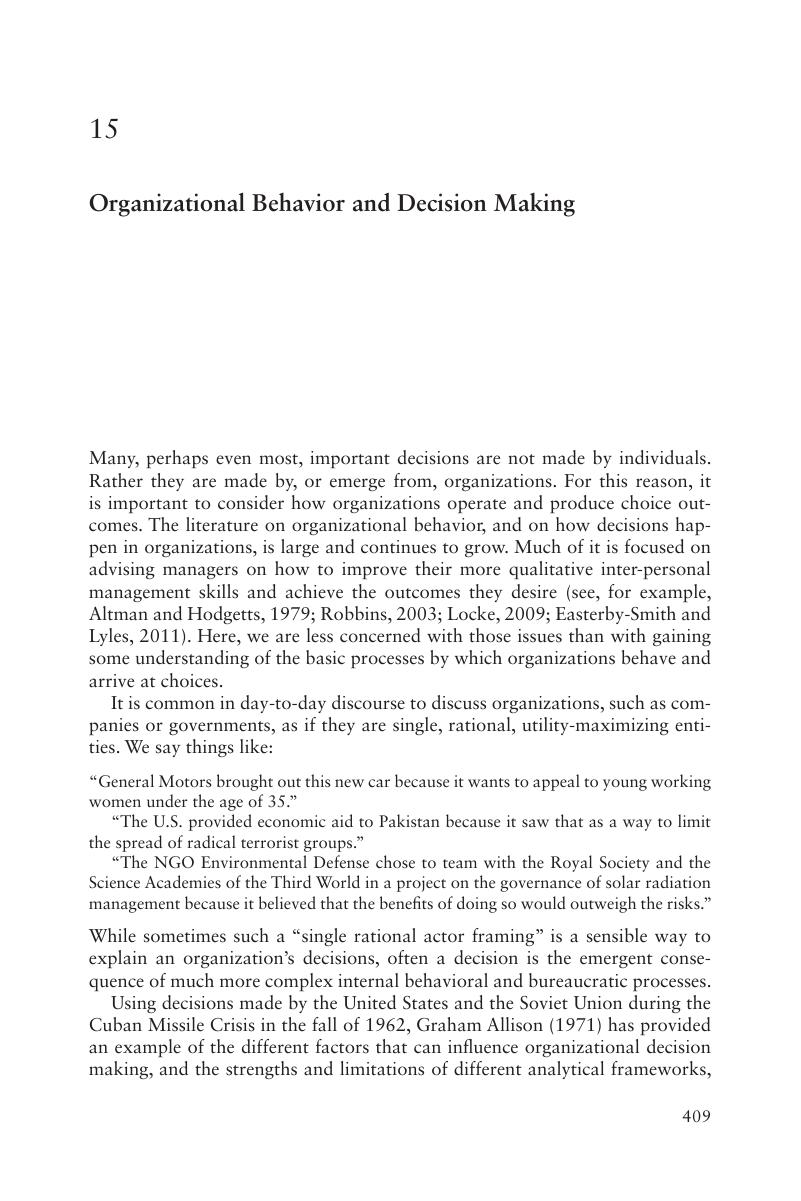Book contents
- Theory and Practice in Policy Analysis
- Theory and Practice in Policy Analysis
- Copyright page
- Contents
- Preface
- Acknowledgments
- 1 Policy Analysis: An Overview
- Part I Making Decisions that Maximize Utility
- Part II Some Widely Used Analysis Tools and Topics
- Part III How Individuals and Organizations Actually Make Decisions
- 12 Human Mental Processes for Perception, Memory, and Decision Making
- 13 Risk Perception and Risk Ranking
- 14 Risk Communication1
- 15 Organizational Behavior and Decision Making
- Part IV The Policy Process and S&T Policy (Mainly) in the United States
- Book part
- Index
- References
15 - Organizational Behavior and Decision Making
from Part III - How Individuals and Organizations Actually Make Decisions
Published online by Cambridge University Press: 24 August 2017
- Theory and Practice in Policy Analysis
- Theory and Practice in Policy Analysis
- Copyright page
- Contents
- Preface
- Acknowledgments
- 1 Policy Analysis: An Overview
- Part I Making Decisions that Maximize Utility
- Part II Some Widely Used Analysis Tools and Topics
- Part III How Individuals and Organizations Actually Make Decisions
- 12 Human Mental Processes for Perception, Memory, and Decision Making
- 13 Risk Perception and Risk Ranking
- 14 Risk Communication1
- 15 Organizational Behavior and Decision Making
- Part IV The Policy Process and S&T Policy (Mainly) in the United States
- Book part
- Index
- References
Summary

Information
- Type
- Chapter
- Information
- Theory and Practice in Policy AnalysisIncluding Applications in Science and Technology, pp. 409 - 440Publisher: Cambridge University PressPrint publication year: 2017
